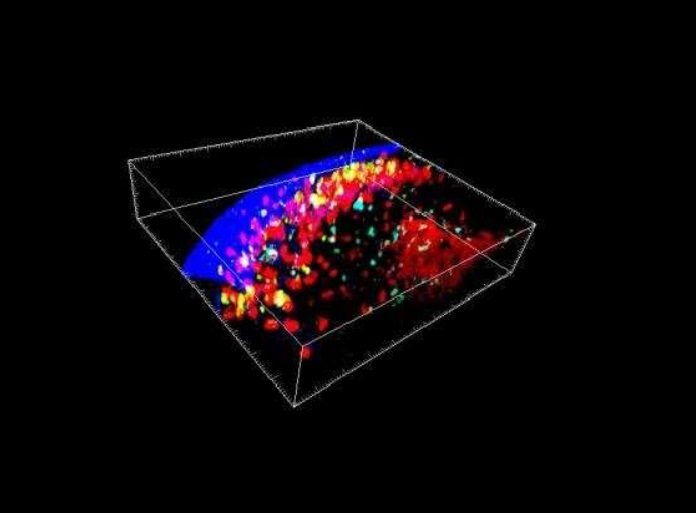Scientists at the Garvan Institute of Medical Research, for the first time, have identified a new structure where the immune system ‘remembers’ past infections and vaccinations—and where immune cells gather to mount a rapid response against an infection the body has seen before. They identified a micro-organ inside the immune system.
Scientists made this discovery while creating movies’ of the immune system in action. For this, they especially used sophisticated high-resolution 3-D microscopy in living animals. Stick stuffed with immune cells of many kinds, the structure is strategically positioned to recognize disease early, making it a one-stop look for battling a ‘remembered’ infection—fast.
individuals presented to a contamination are regularly shielded from getting a similar disease again—ever far back as the Plague of Athens in 430 BC, where plague survivors were noted to have created immunity against reinfection. However, real issues stay about how the body can battle back quick when it experiences a contamination that it has been beforehand presented to.
Scientists reveal the existence of thin, flattened structures extending over the surface of lymph nodes in mice. These dynamic structures are not always present: instead, they appear only when needed to fight an infection against which the animal has previously been exposed.
Scientists also found structures dubbed SPFs abbreviation for Subcapsular Proliferative Foci within sections of lymph nodes from patients.
Later, scientists used sophisticated ‘two-photon’ in vivo microscopy to see several classes of immune cells gathered together in SPFs. Importantly, the researchers could also see that memory B cells were changing into infection-fighting plasma cells. This is a key step in the fight against infection because plasma cells make antibodies to recognize and fend off the invader and protect the body from disease.
Dr. Imogen Moran, the first author of the new study said, “It was exciting to see the memory B cells being activated and clustering in this new structure that had never been seen before. We could see them moving around, interacting with all these other immune cells and turning into plasma cells before our eyes.”
A/Prof Tri Phan, research head said, “the SPF structures are perfectly placed to fight infection fast—so they can stop the disease in its tracks before it takes hold. When you’re fighting bacteria that can double in number every 20 to 30 minutes, every moment matters. To put it bluntly, if your immune system takes too long to assemble the tools to fight the infection, you die.”
“This is why vaccines are so important. Vaccination trains the immune system so that it can make antibodies very rapidly when an infection reappears. Until now we didn’t know how and where this happened.”
“Now, we’ve shown that memory B cells rapidly turn into large numbers of plasma cells in the SPF. The SPF is located strategically where bacteria would re-enter the body and it has all the ingredients assembled in one place to make antibodies—so it’s remarkably well engineered to fight reinfection fast.”
Dr. Moran said, “No one had seen the structures before because traditional microscopy approaches look at thin 2-D sections of tissue that been chemically ‘fixed’ to provide a snapshot in time. The SPF is thin, and it comes and goes: these are both attributes that make it hard to detect using a conventional approach.”
“No one had seen the structures before because traditional microscopy approaches look at thin 2-D sections of tissue that been chemically ‘fixed’ to provide a snapshot in time. The SPF is thin, and it comes and goes: these are both attributes that make it hard to detect using a conventional approach.”
A/Prof Phan said, “It’s a remarkable reminder that there are still mysteries hidden within the body—even though we scientists have been looking at the body’s tissues through the microscope for over 300 years.”
The study is published in the journal Nature Communications.
